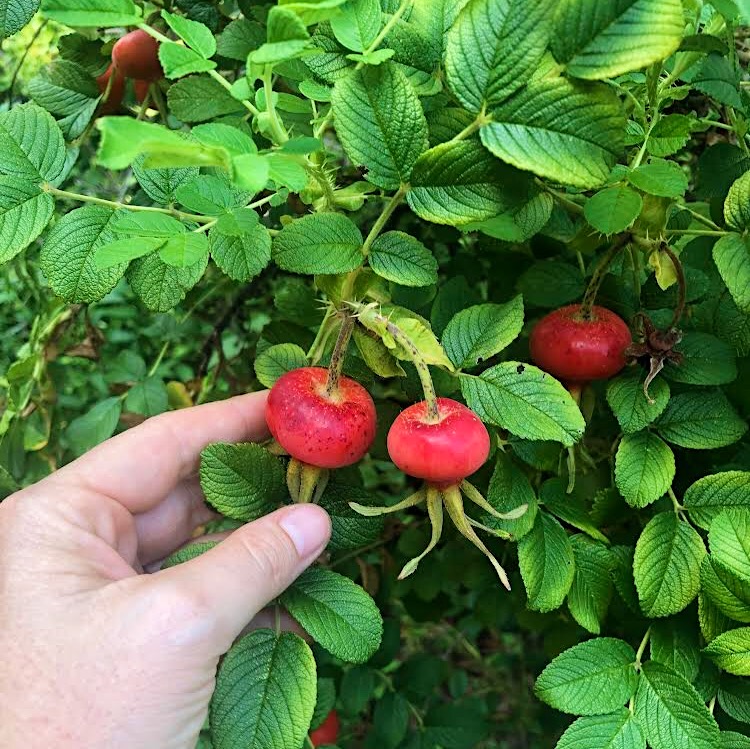
Rosa rugosa, one of the roses we recommend most for clients, produces some of the largest rosehips around.
For a multitude of reasons, rosehips have become a staple of my winter pantry. They’re packed with a host of antioxidants, and are especially high in vitamin C. And I love the floral flavor they add to foods and beverages. Personally, when dried, I like to halve them, put them in the bottom of a mason jar, and cover them with honey (I’m partial to sourwood honey from the mountains of North Georgia and Western North Carolina). It’s a simple and delicious way to preserve and enjoy these healthful, seasonal fruits! What’s really great about rosehips, too, is that they’re easy to grow at home or forage.
I wouldn’t blame you if you rolled your eyes at me right now, since we all know that many traditional garden roses — and even hybrids and newer cultivars — can be a bit ‘particular’ here in the humid south (to say the least). Without the ideal well-drained, sunny (especially morning!) and well-circulated site conditions, roses can present problems for many folks and suffer from a slew of diseases and pests. But what if I told you that you could have your roses and eat ‘em, too, even in areas with higher moisture and partial sun?
For both beauty and function, we spec Rosa rugosa for clients frequently. A vigorous grower with abundant blooms, we’ve been impressed by this rose’s resistance to disease, shade tolerance and versatility on wet and dry sites alike—even in rain gardens! And it produces hips much larger than most other roses. So if you’re interested in growing rose hips at home, this is the perfect plant for you. Pollinators and wildlife love it, too!
While it doesn’t escape cultivation here in hotter climates, it is important to note that Rosa rugosa has been known to spread in cooler climates, particularly near the coast. Known as a ‘beach rose’, it’s particularly well-adapted for sandy soils with high salinity.
Foraging is an excellent way to make use of opportunistic species, too. In our region, Rosa multiflora, commonly called multiflora rose, is particularly abundant. While much smaller than those of Rosa rugosa, harvesting rosehips from multiflora rose in chemical-free locations (steer clear of road sides) is a fantastic, and free, way to score a supply of vitamin C-packed fruits for use over winter.
What’s your favorite way to use rosehips?